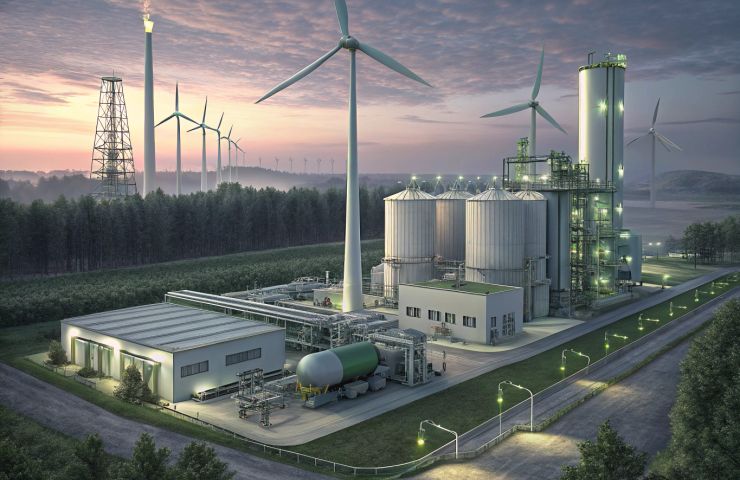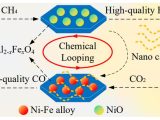
Green Hydrogen-Driven eMethanol Plant in Sweden Secures €3.6M for Industrial Decarbonization
October 16, 2025Ever wonder if the next big leap in shipping and chemical feedstocks could come from a forested corner of Sweden? Well, on 30 September 2025, Liquid Wind, a pioneer in green hydrogen-driven e-fuel production and advanced hydrogen production methods, scored a sweet €3.6 million grant from the Swedish Energy Agency under its Industriklivet program. That cash kickstarts the pre-engineering phase for a cutting-edge e-methanol plant in Örnsköldsvik, aiming to churn out 100,000 tonnes a year.
This isn’t just another facility—it’s a live demo of how renewable electricity, electrolysis, and carbon capture can team up to crack sectors batteries just can’t tackle. Shipping, aviation, chemical manufacturing—they all crave high-energy-density fuels. By turning wind power into liquid fuel, we’re taking on some of the toughest emissions challenges head-on.
Why Örnsköldsvik?
With about 56,000 residents, Örnsköldsvik sits on Sweden’s UNESCO-listed High Coast and boasts a solid industrial backbone in forestry, pulp and paper, and district heating. The local utility, Övik Energi AB, has been mastering solvent-based CO₂ capture at the biomass-fired CHP plant at Hörneborgsverket for decades, feeding waste heat into a nearby network. Here’s why it’s the perfect spot:
- Abundant wind and hydropower for low-cost renewable electricity;
- A steady stream of biogenic CO₂ from biomass combustion;
- Direct port access for exporting synthetic fuels.
By tapping into this existing energy cluster and local know-how, Liquid Wind can fast-track development and slash capital costs—no need to build CO₂ capture and heat networks from scratch.
Power-to-Methanol: A Technical Deep Dive
The nuts and bolts are simple, but the trick is tight integration to keep things economical:
- Electrolysis—wind farms power electrolysers that split water into hydrogen and oxygen;
- Carbon Capture—solvent systems pull CO₂ from biomass-fired flue gas;
- Methanol Synthesis—hydrogen and CO₂ react under catalysts to form e-methanol;
- Heat Integration—waste heat from both electrolysis and synthesis boosts district heating efficiency.
Get the coupling right, and you could push net energy efficiency above 70%, avoiding roughly 200,000 tonnes of CO₂-equivalent emissions each year—like taking 100,000 combustion-engine cars off the roads.
Cost Dynamics and Market Outlook
In recent years, green hydrogen prices have tumbled, dipping below €5/kg in Nordic markets. As electrolyser manufacturing scales up and renewable tariffs fall, power-to-methanol economics look ever more attractive. Plus, certified low-carbon methanol commands a premium, especially with shipping lines and chemical firms under pressure from ESG mandates. That said, full parity with fossil methanol still depends on steady carbon pricing and grid electricity costs.
Aligning with Sweden’s Green Agenda
The Industriklivet initiative, run by the Swedish Energy Agency, is all about slashing industrial emissions with innovative tech. By funding Liquid Wind’s pre-engineering, Sweden is reinforcing its commitment to industrial decarbonization and sustainable energy solutions. This lines up nicely with EU frameworks like Fit for 55 and FuelEU Maritime, which penalize carbon-intensive fuels.
The €3.6 million covers front-end engineering design (FEED), site assessments, environmental reviews, and early procurement planning—key steps before the final investment decision (FID). That public backing signals viability, helping attract private capital and secure offtake contracts with shipping, aviation, and chemical partners.
Scaling Up & Future Phases
While phase one targets 100,000 tonnes per year, Liquid Wind has its sights set on modular expansions that could double capacity. By reusing the same footprint and CO₂ supply, a second phase would leverage further cost drops in electrolyser modules and catalysts, letting operators adjust output based on electricity prices and low-carbon credits.
The Road Ahead
Moving from pre-engineering to full production typically takes three to four years:
- 2026–27: Complete FEED, secure permits, and confirm equipment suppliers;
- 2027–28: Reach FID, mobilize EPC contractors, and start construction;
- 2029: Commission the plant and ramp up to 100,000 tonnes.
Main challenges include electrolyser delivery backlogs, consistent CO₂ feedstock volumes, and firm offtake agreements. But if Liquid Wind nails the engineering and financing, Örnsköldsvik could set the global benchmark for circular energy networks.
Broader Ripple Effects
Construction and operations could generate hundreds of jobs—from plant operators to logistics coordinators—giving the local economy a real boost. And expertise in hydrogen production and carbon capture may spill over into other green-tech ventures at the High Coast Innovation Park.
If this project succeeds, it could spark similar initiatives across Europe, where heavy industries like steel and cement need low-carbon feedstocks. Combining sustainable energy, biogenic CO₂, and power-to-X systems offers a repeatable blueprint for regions with clustered industrial resources.
All eyes are on the final investment decision and the first offtake contracts. If they come through as planned, we’ll see a steady stream of renewable methanol from Sweden by decade’s end—one big leap toward zero-emission shipping lanes.
In short, Örnsköldsvik is gearing up to prove that electrolysis, carbon capture, and bold public-private partnerships can unite in the name of true industrial decarbonization and a cleaner energy future.



 With over 15 years of reporting hydrogen news, we are your premier source for the latest updates and insights in hydrogen and renewable energy.
With over 15 years of reporting hydrogen news, we are your premier source for the latest updates and insights in hydrogen and renewable energy.